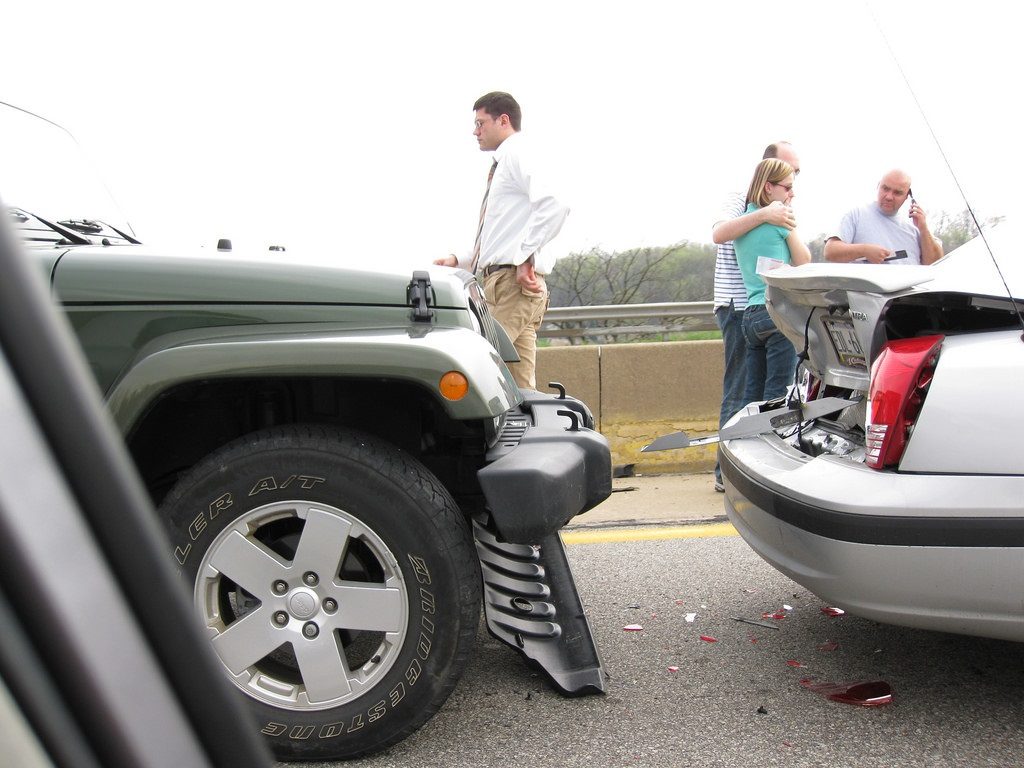It seems you can’t turn on the news or surf local news sites without “police looking for hit-and-run suspect.” Sometimes perception overtakes reality, but not this time. In Louisville alone, local headlines have underscored this point.
- Louisville man killed in hit-and-run in Southland Park – Courier-Journal, February 6, 2019
- Woman dead after hit-and-run on I-264 ramp – Courier-Journal, March 4, 2019:
- LMPD searching for hit-and-run driver that killed woman on Dixie Highway – WDRB, June 10, 2019
- Former Warren Central basketball player turns self in after fatal hit-and Run – WBKO, June 15, 2019
These are just a few, and just in Louisville. Records show that hit-an-run fatalities in Kentucky have gone from 8 in 2012 to 23 in 2016, just one shy of tripling in four years. Not all hit-and-run accidents end in a fatality.
On August 9, 2019, a man in Lexington was walking on New Circle Road in the Bryan Station Neighborhood and was hit by car as he crossed the road. Police say that it was dark, the man was wearing dark clothes and wasn’t using a crosswalk. Fortunately, the man survived, but he did suffer significant injuries Police also say they are looking for a white Honda with front-end damage.
Why do they Run?
A question that many people ask is why? At first blush, it seems we could come up with a proper answer, but if you think about it, we can only ask those who got caught, and according to the American Automotive Association, that makes up only about 10 percent of hit-and-run drivers. This means the other 90 percent don’t get caught, and I guess we’ll never know why they ran.
That aside, human behavioralists Sara J. Solnick and David Hemenway have opined that hit-and-run drivers simply make the decision that after weighing the choices, staying would be worse than fleeing, including the likely punishment for getting caught later.
To many of us this seems absurd. Often times, like in the Lexington case on New Circle Road, the driver wouldn’t be in any great trouble had he or she stayed. While police might have given him a ticket had he stayed, he was risking a felony by leaving the scene where a person was seriously injured.
Maybe he was impaired, or there was a warrant out for his arrest. Problem is, we’ll never know unless the driver gets caught, but the odds are not in favor of that happening.
What Happens after a Hit-and-Run in Kentucky?
This is where it gets sticky. Once the driver flees, the injured are left to fend for themselves. This could put them at risk of a much more serious injury or even death. In many cases, the at-fault driver in a crash is the one who calls for help—especially when the other person is incapacitated.
They might require immediate first aid or help in getting clear of a vehicle that might catch fire. The scenarios are endless. Kentucky is mostly rural which means that in many cases, there might not be anyone coming by soon. The longer the wait for aid, the higher the risk of death or further injury.
There are many types of injuries that require immediate treatment. Failure in any of these can mean significant risk of death or serious injury:
- Pregnancy/Delivery: An accident can put a pregnant woman into labor, and the quicker the response, the more likely there will be a good outcome.
- Neck Injuries: Neck injuries need to be stabilized quickly and delays might cause more problems.
- Deep lacerations: Any loss-of-blood injuries can put the victim in danger if first aid is delayed.
- Heart Attack: The stress of an accident can cause a heart attack, and a quick response from EMS can make a difference.
- Punctured Lungs: Broken ribs can lead to a punctured lung which can deprive a person of their ability to breath and get oxygen.
Will the Trend Continue?
That depends on our response as a society. An age-old deterrence to crime is tougher laws, but leaving the scene of an accident in Kentucky where there was a death or serious injury is already a felony which means that the person could spend time behind bars.
This doesn’t seem to be working in Kentucky. Another approach in Colorado shows some promise. While still maintaining a felony status for the most egregious cases, in 2012, Colorado added an amber alert type program for hit-and-run drivers called a Medina Alert. This is named for Jose Medina who died in 2011 by a hit-and-run driver who was then followed by a taxi-cab driver who got his license plate number. He was later captured by police.
Soon after the law took place, an alert went out after a man died in a hit-and-run, and he was captured the next day after someone phoned in a tip. Since then, there have been around 8 Medina Alerts issued each year, and three to four end in the capture of the suspect.
There is not enough data to suggest victory over the hit-and-run plague, but the more suspects who get caught is a good thing for injured motorists.
Who Pays for Damages in a Hit-and-Run?
A victim of a car accident can usually count on compensation from the at-fault driver, but not when he or she takes off and is never found. So what then? One thing for certain: the insurance company for the driver who fled won’t be on the hook. So this leaves the injured victim to look elsewhere. One place could be the victim’s own insurance policy if he was smart enough to get uninsured/underinsured (UM/UIM) coverage.
In Kentucky, auto insurance is mandatory, but UM/UIM is not. If the victim has it, then their own insurance will cover their damages. However, it’s not automatic. There are some requirements that have to be met before the insurance company will pay out.
What do I do if I’m Injured in a Hit-and-Run in Kentucky?
While it’s sometimes not always possible, get as much information as you can. If not too injured, take pictures of the car. Sometimes the driver will stick around for a few moments before taking off. Get a license plate and any description you can.
Get any witnesses’ names and contact information. These can be valuable resources later. If the person is never found, you should talk to an attorney before you assume that you won’t be able to collect compensation for your injuries. A good attorney will find any source available to help the victim with their financial losses after an accident.
At Kaufman & Stigger, PLLC, we offer a free consultation where you can ask questions and have your case evaluated. We have attorneys and investigators who can help you find compensation sources if they exist. Call the attorneys at Kaufman & Stigger, PLLC, and they will stand behind you to make sure that you are treated fairly and that you get the highest compensation allowed by the law.


